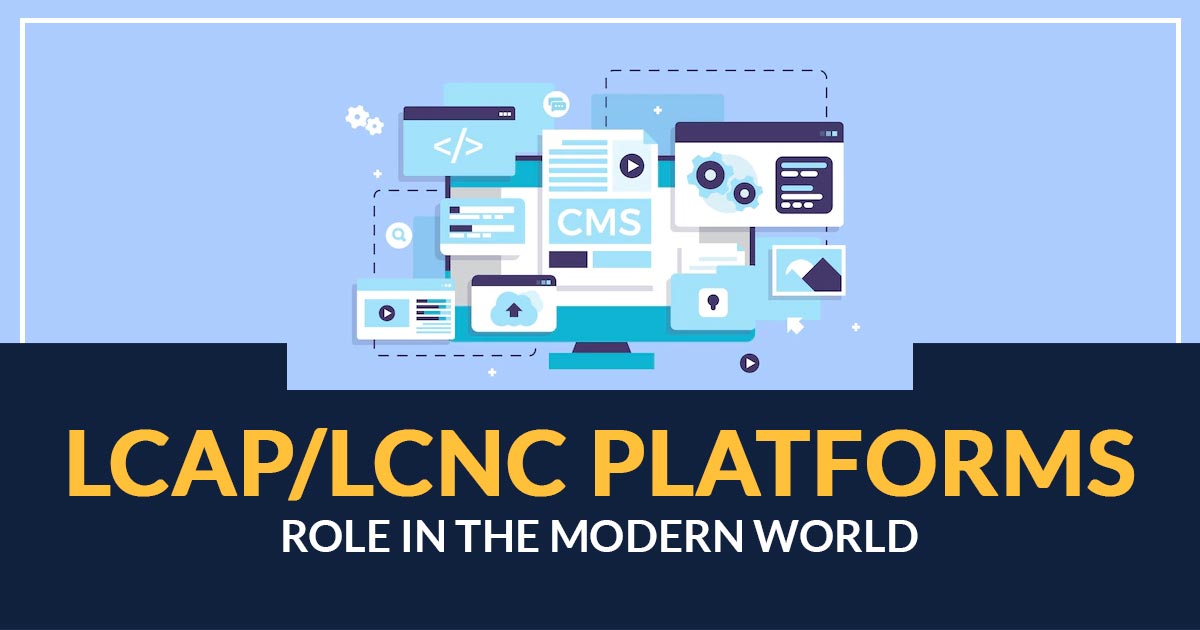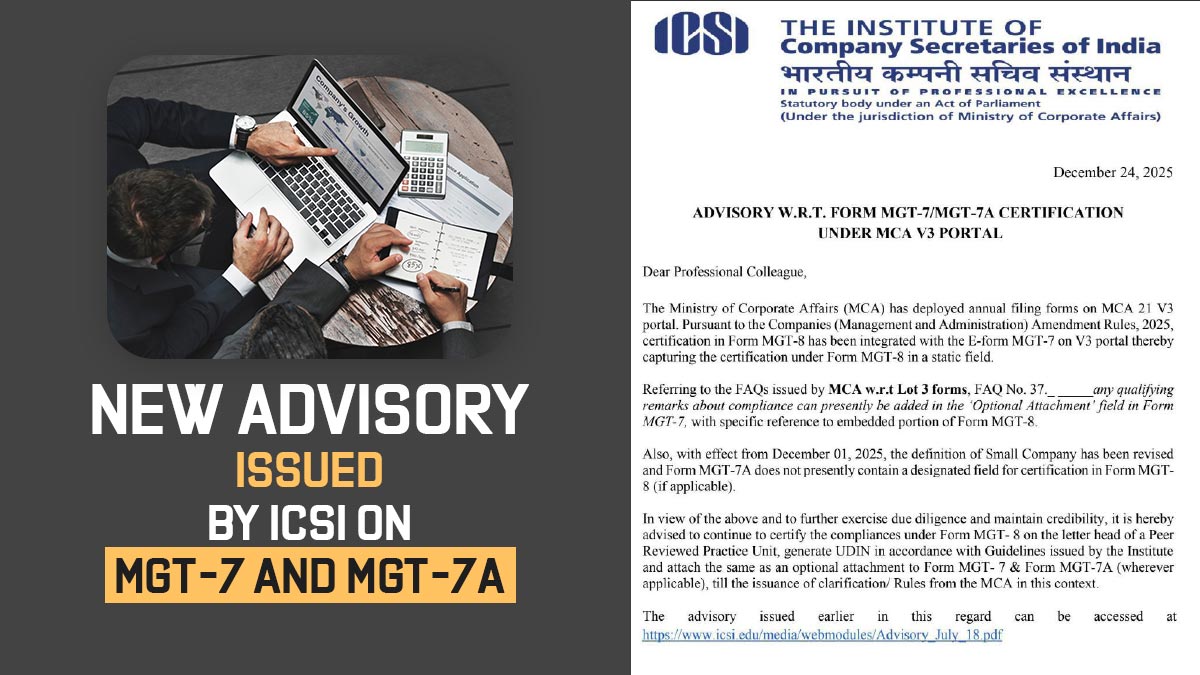
Here we are going to discuss some deliberate understanding of the latest coding terminologies of the coding industry, i.e. Low-Code No-Code (LCNC) Platform as well as Low-Code Application Platform (LCAP), which would be game-changing platforms in the upcoming coding industry. In recent times, multiple IT firms are gearing up for the least coding segment within the development of applications and here we will detail some of the rising LCNC/LCAP platforms with basics.
- LCNC Application Development Process
- How Capable Are LCAP or LCNC Platforms?
- Benefits of LCAP/LCNC Platforms
- LCAP/LCNC Platform Challenges & Risks
- SAG Infotech GenCodex LCNC/LCAP Platforms
- FAQs on LCAP and LCNC Platforms
Introduction About LCNC (Low Code No Code)
Because of the ability of the LCNC, it gained popularity for facilitating the development of mechanisms, surge skills, and bridging the gap between the business needs and the capabilities of IT. Reducing the time, effort, and complexity related to traditional software development is the objective of both low-code and no-code. They would facilitate the quicker development of the application, permitting the users to make the prototypes or the app that is fully operational with lower coding agility. With distinct data sources, APIs, and services, such platforms furnish built-in integrations to permit the faster development and formation of the apps.
The people can proceed to work with the low code no code who do not know coding or don’t have time to go through the coding process. On the actual coding languages like PHP, Python, and Java, such LCNC (low code and no code) frameworks are developed, and end users would not be associated with the specifics. Rather than being provided with visual software development environments in which they are able to drag and drop elements of programs, link them, and see their consequences in effect the same might be used as a familiar wizard-style paradigm for developing, testing, and position the applications which do concern with ease of usage.
Everything About the Trending LCNC/LCAP Platforms
For so long, traditional hand-coding methods were the ultimate way to develop an application, but not anymore. The use of LCAP (low-code application platforms) is transforming conventional approaches and proving to be beneficial in modern-day development. These platforms, on one side are enabling skilled developers to develop applications faster, and on the other side, they are allowing business users with no prior coding experience to develop applications and programs with ease.
Low-Code/No-Code (LCNC) Application Development Process
Low-code application development is a visual approach to software development. Basically, creating enterprise-level applications using visuals and basic skills without proficient programming knowledge or skills. It is also known as the No-code method of application development.
Basically, this method automates and optimizes every step of a development process and enables the rapid delivery of any software solution. It disrupts traditional methods of business and IT to foster continued collaboration.
LCAP platform uses many different design options compared to traditional development methods. It offers a drag-and-drop interface that reduces the amount of manually input code. Additionally, it also features pre-built modules and ready-to-use APIs to interlink them.
How Capable Are LCNC or LCAP Platforms?
Low-code application development platforms certainly improve the speed of application development, but speed is not the only thing they provide. Here’s a glimpse of what a low-code app development platform is capable of.
Visual Tools
Low-Code’s mission is to transform the software industry, and to achieve that it provides a variety of visual modelling tools to simplify the amount of raw coding a user needs to build an application.
Low Code Platform Pre-built Components
Instead of having to rely on manually punched code every time, developers can use pre-built components offered by these LCAPs. These components can be merged together to reduce the time required for development and testing.
LCNC Platform Scaling
There are various methods and solutions already available in the market. Still, with faster prototyping and production, LCAPs make scaling the app/project and user base much more accessible than other solutions.
Benefits of LCNC/LCAP Platforms in the Modern World 2025

By employing a low-code app development platform, various real-world benefits can be unlocked. Some major ones are listed below
Anyone can Develop Apps
The biggest and most important advantage is that anyone can develop software and applications using the LCAP (Low-code application platforms). They don’t need technical, especially coding, experience, or knowledge, to develop and deploy their app in a short time period.
Improves Productivity
With low-code app development, business users don’t have to rely on IT companies to meet their software requirements. It also helps skilled developers to develop apps at a faster rate and with more accuracy.
Easy Collaboration
Sometimes external help is required to ensure stable operation, consistency, and practicality of the applications. LCAP platforms offer collaboration features that make development easier and more accurate. This feature provides a way to pool suitable data into a single pool without creating a mess of copies.
Lower Costs
Normally, these platforms run on the cloud, so businesses don’t have to invest much in hardware. It replaces all IT professional costs and also saves on all overhead costs. And since these are known for speeding up the pace of development, it reduces man-hours, resulting in savings in revenue.
Top-notch Agility
These platforms provide excellent agility by automating everything from building to testing. Thus, the team will have more time to complete the work rather than wasting time on extra procedures.
Rich and Joyous Innovation
This mode of development reduces the burden on the IT people and empowers citizen developers to create unique apps with their creativity and innovative ideas.
Less Manpower Requirement
The latest LCAP, as well as the LCNC platforms, are much more efficient than the current traditional methods of development through the means of coding, as there is a pre-developed infrastructure of the complete algorithm standing by side with the professionals, and it requires less manpower during the development as it happens simultaneously.
Large Scale Development
The major benefit of the LCNC and LCAP platforms is also that the development is done on a large scale due to the factor of simultaneous development within the coding of an application, as there are multiple web/mobile and desktop applications getting developed at the same time frame which makes it an overall larger development perspective.
Significant Development Speed
The obvious factor of LCAP platforms and the LCNC platform is that the development speed of applications gets pace being a central source code framework which gives a network of codes to be settled as the development proceeds to its final stages.
2025 LCNC/LCAP Platform Challenges and Risks
LCAP (Low-code application platforms) may have been popular once because of their rapid application development ability, but they are not free of challenges. Because of the increasing number of problems, the long-term success of the LCAP tool cannot be guaranteed, and there is a need for a more efficient and better overall solution. In this article, we shed light on the various challenges that a typical LCAP platform may suffer:
Need Specific Skills
In order to work with the LCAP platform, developers are required to learn certain skills and need to become experts in LCAP development with respective platforms and might also be required to have proper certifications before they can be hired by an organization. Not all developers, especially those who have experience in building software applications, are willing to learn a new skill from scratch.
Technical Limitations
One of the limitations of many LCAP platforms is the huge amount of technical errors and limitations. For instance, most of the LCAP platforms are designed to create only small and low-traffic applications and might not work as smoothly if you are looking to build a high-volume application with advanced features such as batch processing, data recovery, etc.
Data Portability
Even after so many years of development, many LCAP platforms still do not support data portability, i.e. do not allow the port of data to perform analytics or use in other applications.
User Interface Problems
While it may be easy to build quick user interfaces using low-code platforms, they definitely lack features in terms of modern screen layout, font, colour, and other UI options.
Customization, Upgrades/Migrations & Other Challenges
When using LCAP tools, don’t expect to write complex code or over-optimize the app because this is where these low-code tools are limited.
GenCodex Low-Code No-Code Platform (LCNC) / Low Code Application Platform (LCAP)
Now here comes the LCNC and LCAP platforms from SAG Infotech, which are currently in a development stage in full swing. The company has command over this technology and will be releasing a fully developed utility for all individuals, whether technical professionals or associated with any company, who can develop fully automated software and applications for all devices and platforms simultaneously.
As multi-platform development is its core, application development on multiple platforms, i.e. desktop, web, and mobile, is a much easier task than ever before.
Other than that, the SAG Infotech GenCodex LCAP/LCNC platform will be given access to the source code, which will add multiple databases and programming languages, a unique feature of the project development. Other microservices for the deployment are a better avenue for professional developers to get assistance in the overall process.
Finally, the freedom of multiple developments of applications given by the SAG Infotech LCAP platform, along with the LCNC platform, is a major breakthrough in the industry of professional coding.
FAQs on LCAP and LCNC Platforms
Q.1 – What is the LCAP platform?
An application platform known as a “Low-Code Application Platform”(LCAP) is used to quickly build and deploy customised applications by abstracting, reducing, or even doing away with the requirement for coding during development. Low-code capabilities (such as a model-driven or graphical programming technique with scripting) to construct a whole application are a bare minimum need for an LCAP. assistance with the creation of applications that include user interfaces, business logic, workflow, and data services; streamlined application administration, deployment, and testing.
Q.2 – What is the LCNC (Low-Code and No-Code) Platforms?
Building software as per the requirements is a long process and requires a lot of coding and programming languages. What if you could develop efficient software without much knowledge of programming languages? LCNC (Low-Code and No-Code) is the name of an approach where one can develop software using visuals and some basic skills. Such visual software development platforms work in a simple drag-and-drop manner. Small to medium-sized enterprises can create some useful applications through low-code and no-code platforms. All in all LCNC platforms save you a lot of time.
Q.3 – How does a Low Code No code (LCNC) platform work?
A low-code no-code platform enables programmers to create software applications using an interactive interface based on the drag and drop feature. These platforms can be used to create basic, no-code applications without any coding knowledge or experience.
Q.4 – Low-Code and No-Code Working Process for Enterprise Applications
Low-code and no-code development platforms are designed to enable new, inexperienced programmers to create enterprise applications without the need to write code. They utilise a drag and drop interface to allow the development of applications using predefined items and features.
Q.5 – Are no-code apps any good?
No-code apps are mainly used by new programmers or individuals with no coding experience. These platforms allow you to build basic apps and software using a simple drag and drop interface. They are easy and quick to use.
Q.6 – Myth or Real, There is No Need of Developers After Low-code
Not likely, Yes, low-code platforms can make life easier for developers by allowing them to skip basic code and import predefined features using drag and drop, but they cannot be relied upon for the development of advanced and complex applications. Hence, they can probably never fully replace developers.
Q.7 – What is real Example of a Low-code Platform?
WordPress is one of the most popular examples of a low-code platform. It enables people to build websites without the need to write code. The WordPress editor works on the drag and drop concept, where you can easily import features and components from the WordPress library.
Q.8 – How is Low-code Different from No-code?
While low-code platforms need a basic knowledge of programming and need developers to write less code, no-code platforms are completely free of coding and can be used to build applications without the need to write code. Low-code platforms are used by developers, but no-code platforms are primarily meant for businesses.
Q.9 – What is the future Scope of low-code no-code?
Low-code no-code platforms will continue to be in use by inexperienced programmers, businesses, etc. for writing low-code applications. Their market has grown significantly in the past years and will continue to grow in the years to come.
Q.10 – What are the most important benefits of low-code no-code?
Low-code platforms allow developers to quickly build applications by importing predefined features and items from the library. They reduce the development time and cost by a great deal. Similarly, no-code platforms can be used by practically anyone to build applications without the need to write a single line of code.
Disclaimer:- "All the information given is from credible and authentic resources and has been published after moderation. Any change in detail or information other than fact must be considered a human error. The blog we write is to provide updated information. You can raise any query on matters related to blog content. Also, note that we don’t provide any type of consultancy so we are sorry for being unable to reply to consultancy queries. Also, we do mention that our replies are solely on a practical basis and we advise you to cross verify with professional authorities for a fact check."








